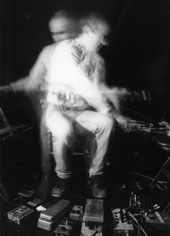
The original Invisible String Quartet
- complete with multiple pedals
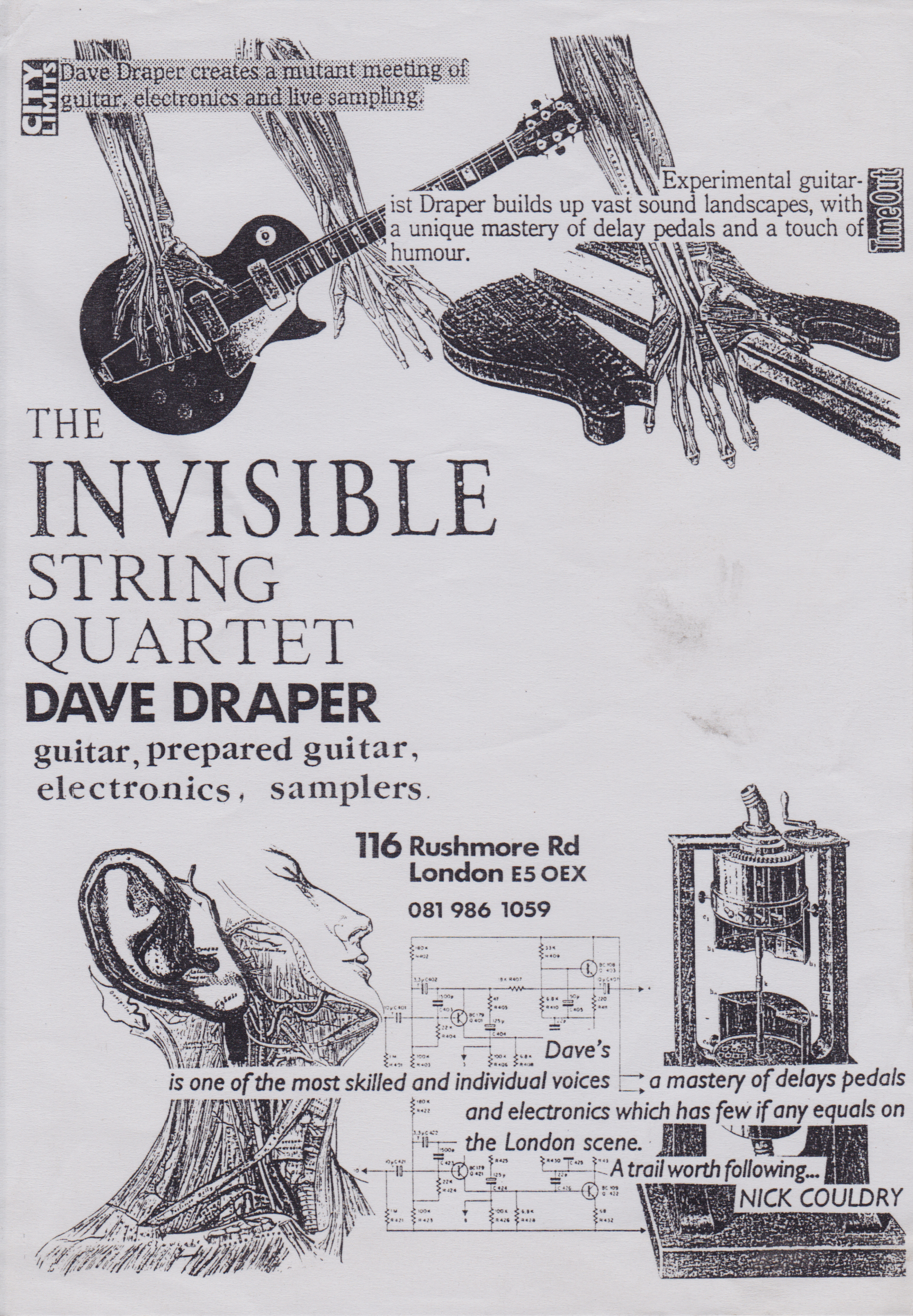
Draper's compositional sense and his remarkable control of the technology in this real-time context make 'Entomic' into a compelling release- Wire revue of 'Entomic'
The Invisible String Quartet
& other collaborations
Thanks to a chance jack plug insertion one day, I realised that guitar effects units would go into oscillation and make weird sounds if the output was connected to the input! Thus began my exploration of 'circuit-bending', or as I called it, abuse, of my f/x pedals. I'd always been fascinated by sound; the short waveband on the 'wireless' when I was a kid, in between stations, strange pop music phasing in and out, morse code, white noise, industrial-sounding interference - I loved it! Later I came across musique concrète, John Cage's 'prepared' piano, and the electronic music of Varèse and Stockhausen. Along with circuit-bending effects pedals came the experiments with tape recorders, 'preparing' a second guitar with hacksaw blades, meat skewers, spatulas and nails, so when I acquired a couple of looping delay pedals, and could produce a four-part canon - hey presto! I'd created the Invisible String Quartet! Seemed like a catchy name at the time.
The first ISQ gig was in 1991 at the Polar Bear Club, run by Andy Hammond, Nick Couldry and Adam Bohman, who together with John Telfer were the wonderful and ground-breaking 'Conspiracy', a quartet which restored my faith in the possibilities of unfettered free improvisation. I set up the Chinapig Club soon after, playing there and at many similar back room enterprises. An invitation from Eric & Bob Peachey led to a short British tour (Arts Council funded) with their quartet 'Osmosis'. This prompted me to record and release a CD, 'Entomic' assisted again by the Arts Council, producing 'Entomic' for George Haslam's 'SLAM' label in 1995. Well received by critics, it helped secure tours in Holland, Germany, Belgium and Britain.
Now I had access to instant sampling hardware, I began to use field recordings as source material too. With a minidisc of samples of carpentry tools (my day job!), I did several gigs utilising the rhythms of handsaws, jigsaws, sanding, filing, chiselling, hammering, alongside the dulcet tones of routers, circular saws, drills and bowed handsaws. I also performed at the ICA with this setup, for a London Musicians' Collective concert.
As time moved on, many of my old effects boxes died (of abuse?), carting around half a hundredweight of hardware in a flightcase, plus amp & two guitars became something of a burden, so I dropped the second guitar, the ISQ identity, and looked into the possibilities of a software solution on a laptop. I now have a small guitar multi-effects unit, the sampling/looping is taken care of by a software multitrack looper, Mobius, running within Plogue Bidule on a macbook pro. The whole is controlled via MIDI, using a KMI softstep MIDI controller with custom software I've built in Bidule. The ISQ concept is still there, extended if anything; using field recordings has become even easier with Bidule, including sampled sounds from walks in the Lea Valley, along the Thames Estuary, and the ability to record underwater, with recently acquired hydrophones!
More and more time is spent these days refining and extending the software, which basically time and speed shifts the audio either manually, or multiplied by randomly selected choices of ratios, related to just intonation. The random element provides surprise, a trigger for new direction, contrast, interest and innovation in the music. Bidule also records live performances as multitrack audio files for later mixing, and a file of the MIDI control functions used, which is potetnially a virtual score. Neat. And much easier to carry around than all that hardware!
With one guitar in hand, another prepared with all manner of items wedged between the strings, all linked the spaghetti junction of pedals....he went on to create bizarre sonic patterns, scuttling and rhythmic arrays of sound, going beyond what was recognisable as guitar and moving into the realms of Arcane Device, and serious electronic music, with all sorts of aggressive, shimmering and juddering sound clusters.- Audion review of Electronica festival
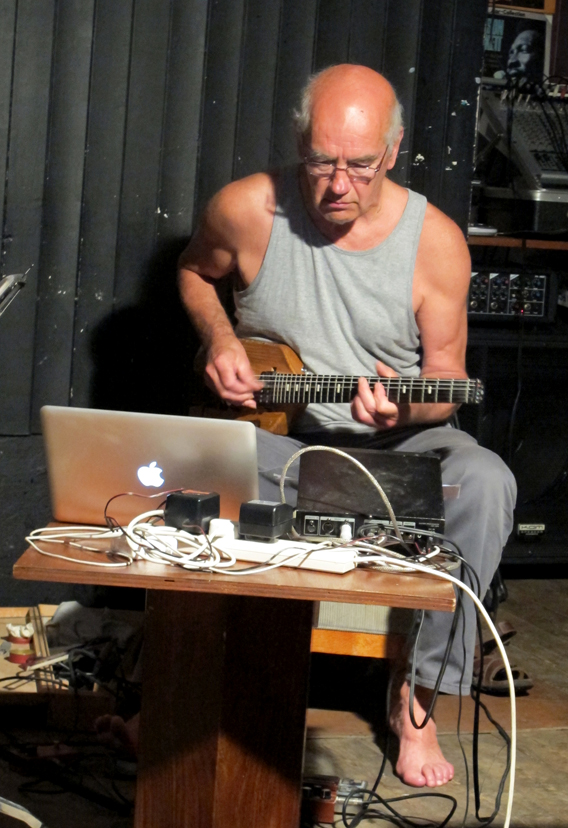 Performing
recently with
a more
Performing
recently with
a moreportable (and versatile) version
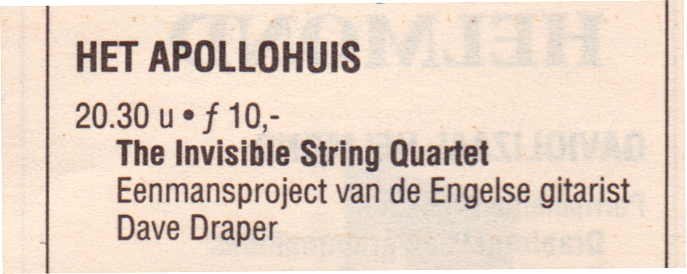

Experimental guitarist Draper builds up vast sound landscapes with a unique mastery of delay pedals and a touch of humour- Time Out
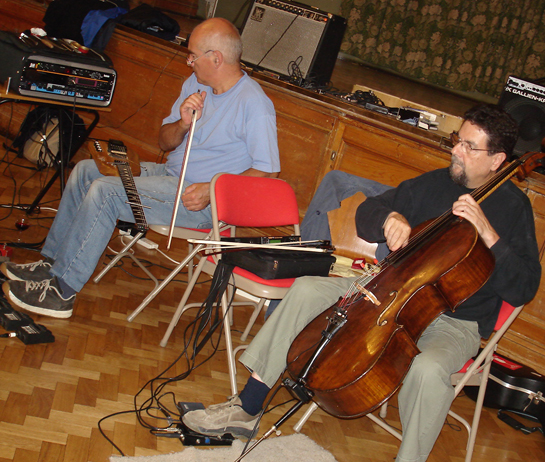
with Marcio Mattos for Boris Born's exhibition opening, 2005, Bishopsgate Institute
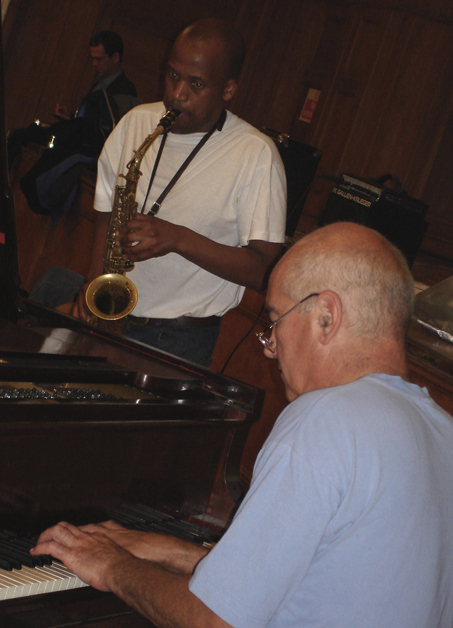
playing piano with Ntshuks Bonga, same occasion 2005
Other collaborations
Duos:
It was Hugh Metcalfe who dubbed the duo 'FowlDrape'; he's very fond of inventing instant names for ad hoc groups appearing at his Klinker club!
In all of these situations, I'm using guitar & laptop, multilayering to a greater or lesser extent. It has become my modus operandi. In this context, I find Dave Fowler an exceptional drummer in his response to looping technology, never being phased by it, just playing what he hears, which can be a completely different rhythm to that of the loop, but never out of place!
Trios
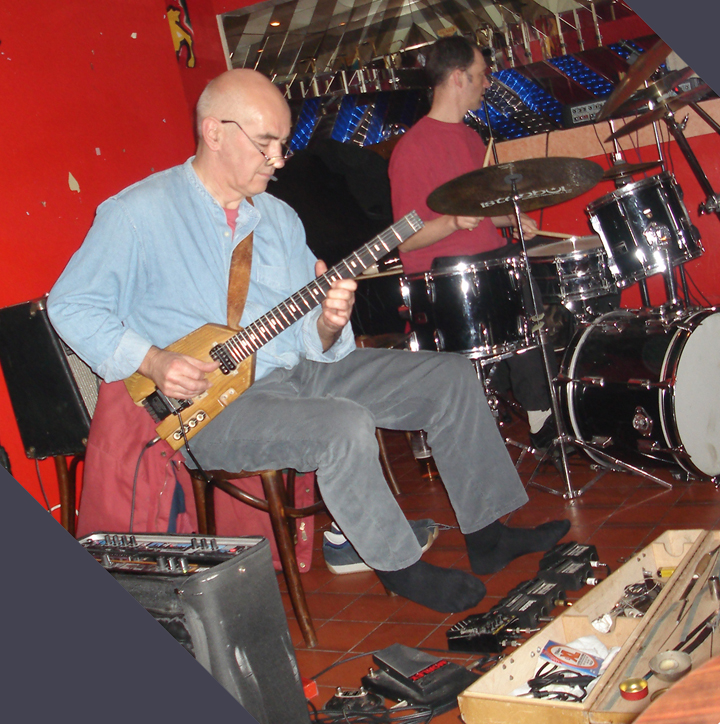
with Dave Fowler at the Klinker, Sussex Arms, 2006
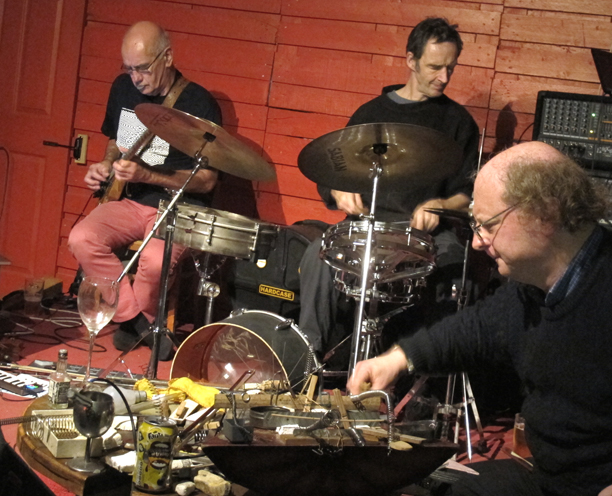
with Dave Fowler & Adam Bohman, Arch 1, 2013.